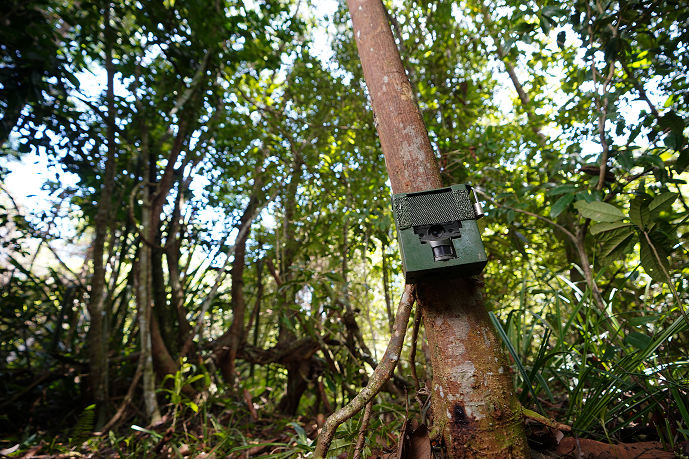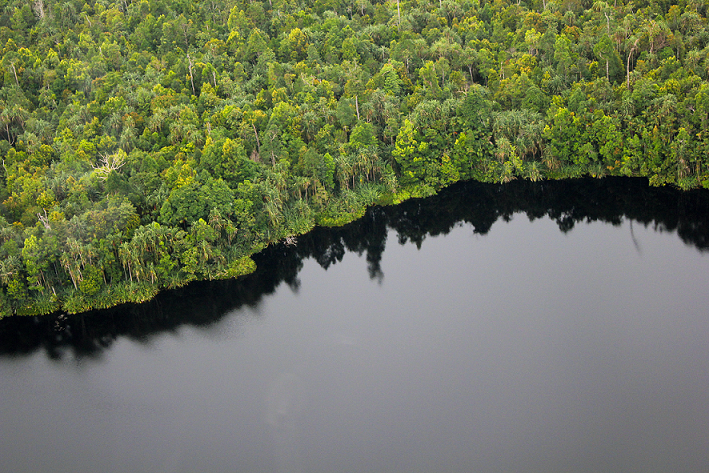June 19, 2024
New technologies are making wildlife conservation easier and more effective. Digital solutions allow us to monitor wildlife populations, behaviours, and habitats more efficiently, analyse specimens in greater detail, and then communicate new discoveries to a global audience. By improving the ways we collect, analyse and action wildlife data, we can identify potential threats and opportunities, then design and implement successful conservation strategies.
On March 3, United Nations World Wildlife Day highlighted some of the ways in which technological advancements are benefiting wildlife conservation. In Indonesia, Restorasi Ekosistem Riau (RER) is utilising digital developments to expand monitoring efforts, improve landscape management and even prevent forest and peatland fires. In this article, we explore the potential of various new innovations and reveal the transformative impact that some are already having in the field.
Technology in Wildlife Conservation
Satellite and GPS tracking technologies allow scientists to monitor animals’ movement patterns and identify areas that need to be protected. They can even help us to pre-empt (and sometimes prevent) conflict between animals and humans. GPS collars are often used to track large mammals like elephants and tigers, providing insights into their behaviour and the ways they interact with their environment.
Drones, or unmanned aerial vehicles (UAVs), are another technological tool that’s increasingly being used in conservation efforts. They can cover large areas quickly and provide high-resolution images, making them ideal for wildlife monitoring. Moreover, drones can be used to combat illegal activities such as poaching and deforestation, by providing real-time surveillance and evidence to support convictions.
With remote sensing technology like LiDAR (Light Detection and Ranging), we can detect changes in land use, vegetation cover, and water bodies, which can provide an early warning of habitat loss and highlight the impacts of climate change.
Wildlife Camera Traps
Down at ground level, camera traps can reveal all sorts of information about species diversity, help build up a comprehensive picture of ecosystem health, and even reveal intimate animal behaviours. This technology is considered ‘wildlife friendly’, meaning it causes minimal disturbance to animals.

Camera traps play a vital role in research at RER. In 2017 alone, a single monitoring project installed a total of 84 camera traps, which operated for 7,758 nights and captured 6,310 images and videos. This unobtrusive form of surveillance helped us to identify and observe 52 separate animal species, including pangolins, mouse deer, porcupine, wild pigs, sambar deer, and sun bears, along with various species of reptiles and birds.
The role of AI
AI is already being used in wildlife to identify and classify images from cameras traps, as well as sounds captured on recording devices. This is a new field, and we hope that RER can help populate the sound library which will be used in future identification.
GPS Collars and Tiger Conservation
In 2020, RER was chosen by the Ministry of Environment and Forestry (KLHK) as the release site for Corina, the Sumatran tiger. She was fitted with a GPS collar, which has since given us some fascinating insights into her behaviour. We have been able to track her movements and map out her territory – information that can be scaled up to inform tiger conservation strategies all over the world.
Corina is the first tiger to be released into a peat swamp forest environment, a place that is filled with dense vegetation, water-logged soil and a mosaic of different habitats. Prior to her release, we field-tested GPS collars in six different sampling sites that were representative of three major habitat types: open, plantation, and natural forest.
In spite of the various topographical challenges posed by these environments, the technology still performed well, with a transmission success rate of over 80% for the collars. We also tested a Very High Frequency (VHF) radio telemetry system that would help us track Corina in the field, which proved to be effective at distances of up to almost 1 kilometre. Armed with this new equipment, our field officers were able to track Corina and monitor how she interacted with the world around her.
Landscape Mapping and Fire Prevention
At the macro level, advancements in drone technology have allowed us to collect high-resolution images and other landscape data quickly and relatively cheaply, with minimal disruption to the environment. Thermal imagery drones are especially useful in areas of high forest cover, as they can reveal animal aggregations that would otherwise remain unseen.
Thermal imaging drones also be useful for studying large mammals that can be dangerous to approach on foot, particularly those that are nocturnal.
Thermal imaging and drone technology have another, vital application for places like RER. In these large, forested landscapes, they are an invaluable tool in fire prevention and response. For the Planning and Fire Prevention teams at RER, drones help to coordinate patrols of restoration activities in severely degraded lands and can quickly spot potential hotspots for land and forest fires. Combined with satellites images, drones give us a broad but detailed view of the forest that would have been impossible just a few years ago.
The Most Effective Conservation Tools
From drones and camera traps to satellite and GPS, digital technology is opening up a world of new possibilities for wildlife conservation. Recent innovations have allowed us to monitor animals and their habitats more effectively, revealing new behaviours and identifying potential threats, then helping us design and implement more effective conservation strategies based on solid data and information. But technology is only half the story. Digital innovations are most impactful when combined with more traditional conservation methods, such as education, awareness, and community outreach.

As always, the most effective tools in conservation efforts are people’s determination to bring about positive change, and their willingness to work together. Digital innovations are strengthening these ties and expanding their impact, by connecting people and planet.